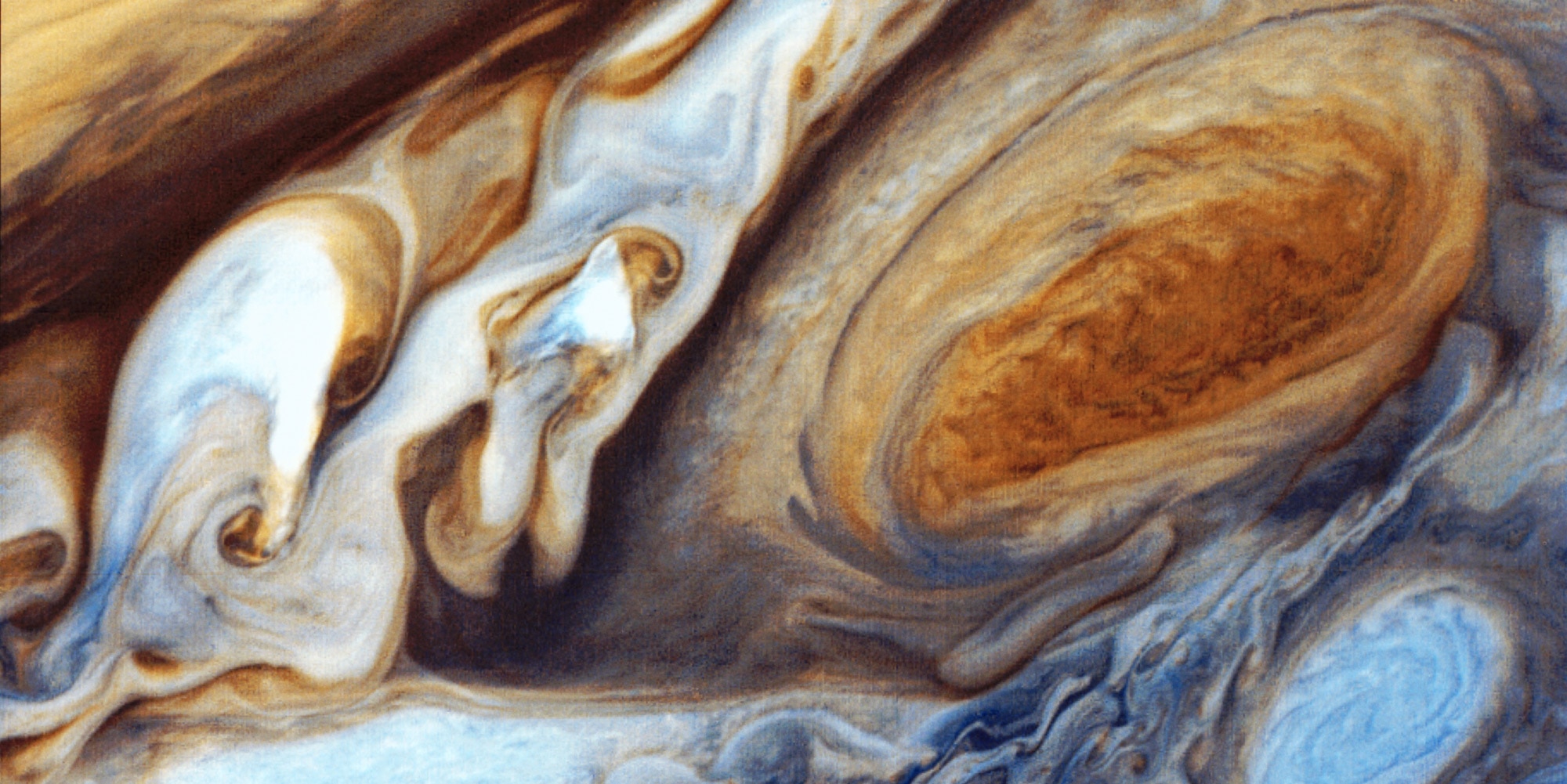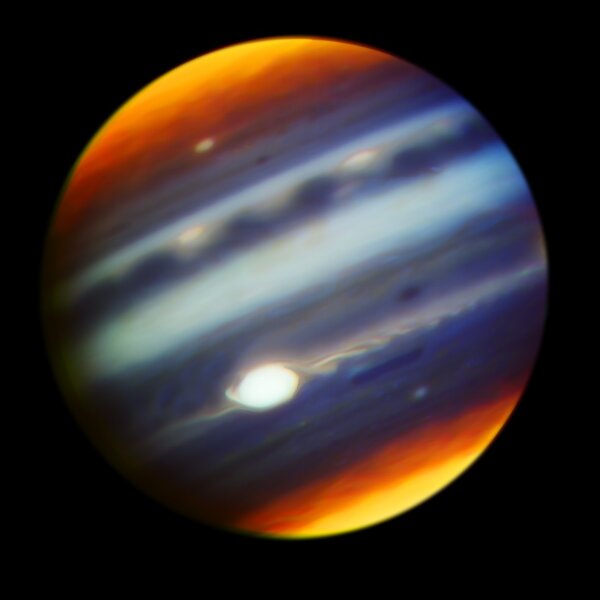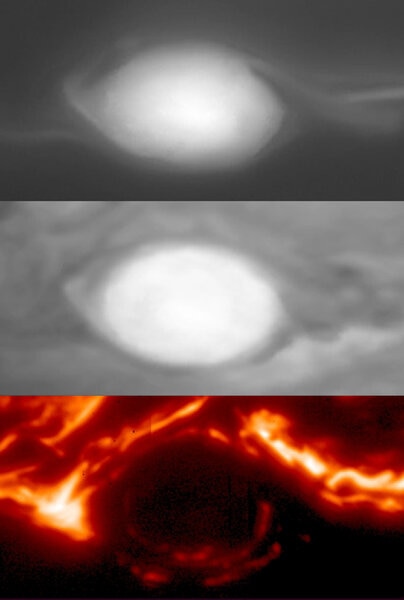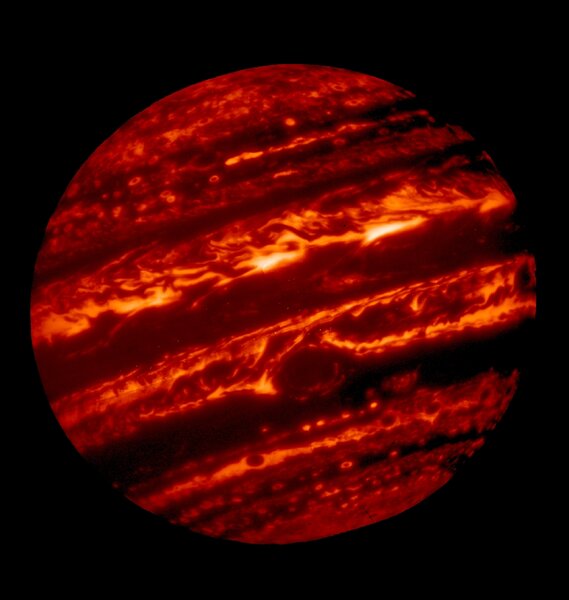Create a free profile to get unlimited access to exclusive videos, sweepstakes, and more!
Get ready to see Jupiter's Great Red Spot up close and personal

On July 10/11, 2017, the Juno spacecraft will once again dip down over Jupiter’s cloud tops, screaming past the planet at over 200,000 kilometers per hour. It’s done this before, six times in fact, but this one will be different: It’ll pass directly over the Great Red Spot.
That’s a big deal. Literally! The iconic Great Red Spot is a vast storm in Jupiter’s southern hemisphere. Besides the wide belts and zones (darker and lighter stripes parallel to the planet’s equator), the Red Spot is the most obvious feature in Jupiter’s clouds. That’s because of its color (which varies from salmon pink to deep red over time), but also because of its ridiculously huge size: It spans 16,000 kilometers east to west. That’s wider than our entire planet Earth!
It was first discovered at least as far back as the late 1600s, and could be far older. The reason it’s persistent is that it’s an anti-cyclone, a high-pressure system. A vortex (a rotating fluid like air or water) tends to dissipate due to turbulence and friction with air around it, but it turns out* that a vortex in a fluid can be stable if the fluid it’s in is rotating as well. In other words, a spinning storm can persist because the planet it’s on is spinning too.
[Jupiter in five infrared colors shows high altitude haze over the Red Spot and poles, and several other storms dotting the clouds. Credit: Gemini Observatory/AURA/NSF/JPL-Caltech/NASA]
On Earth, hurricanes and such are powered by warm water, which causes moist air to rise. It picks up spin due to the Coriolis effect, which is because the Earth spins. They eventually die out when they pass over land and the supply of warm water disappears. But the Great Red Spot is powered by heat coming up from Jupiter’s interior, and there’s no land to pass over. It’s basically hydrogen, helium and other gases all the way down, so there’s nothing to keep the Red Spot from disappearing. Due to our Earthly prejudices that may seem odd and to violate the rules, but nevertheless, it persists.
Even though we’ve been watching it for centuries, there’s much we still don’t understand about the Great Red Spot. Why does it change color? That’s probably due to a change in atmospheric chemistry inside the storm, but why? What’s going on in detail? It also has been shrinking over the past few decades. It used to be over 40,000 km across, but in the 1970s it had shrunk to about half that size. Since Hubble’s been viewing it in the 1990s, it’s gone from 20,000 km down to about 16,000 km across. Earth is about 13,000 km across, for comparion.
So, what’s causing this shrinkage? No one knows. Perhaps the data returned from Juno this week will help us figure it out. And Juno is getting some help from Earth, too: Astronomers using the massive Gemini North telescope in Hawaii have been observing Jupiter and the spot specifically to get ready for the Juno encounter.
[Near infrared views of Jupiter's Great Red Spot (top and middle) show high altitude haze, and far infrared (bottom) shows warm lower armospheric material. Credit: Gemini Observatory/AURA/NSF/JPL-Caltech/NASA/UC Berkeley]
Gemini is tuned to observe in the infrared, colors outside the range of what the human eye can see. This is very useful! For example, clouds and high-altitude haze in Jupiter’s atmosphere are very reflective in near-infrared (colors just outside what we can see), so they appear bright, allowing astronomers to trace winds. Gemini observations of the spot in May 2017 show many intriguing features. There’s a hook-like structure off the west side of the spot that appears to be feeding a long streamer that goes north and around the spot. There are also wave patterns, ripples that weaken with distance, downstream (east, to the right) from the spot as well.
These same clouds and haze are very good at blocking longer-wavelength infrared light, the kind emitted by warm objects. Heat leaking up from the interior of Jupiter warms the air, but the IR light that gas emits is absorbed by the haze, so in those longer wavelengths the haze and clouds appear dark, and the deeper material bright. The Great Red Spot had lots of haze over it when the Gemini observations were made, so it appears dark in these far infrared images.
All of this will make for juicy targets for Juno’s cameras. The spacecraft will pass just 9,000 km above the spot’s cloud tops, and should provide a stunning view of them. I can’t wait to see them!
[A thermal infrared view of Jupiter shows clear spots allowing us to see the warmer depths glowing, while higher clouds block that warmth, appearing black. Credit: Gemini Observatory/AURA/NSF/UC Berkeley]
And today, as I post this, it’s July 4, 2017. This marks the one-year anniversary of Juno achieving orbit around the mighty planet. It was supposed to orbit the planet on a long, elliptical path twice, then fire its engines to drop it into a more circular, lower orbit. However, a problem with some helium valves on the spacecraft prevented that, and the engineers decided to keep it on its looping 54-day orbit around the planet rather than try to fire the engines and risk it getting into a less useful trajectory.
And here we are, with Juno about to plummet down again. Jupiter has intense radiation around it due to its tremendously strong magnetic field, and this will eventually destroy Juno's camera (other instruments are deeper inside the spacecraft and better protected). That will be a sad day, and it may happen as soon as the next pass over Jupiter (what scientists call perijove). But, for now, the camera appears to be working well.
So, stay tuned. In a week or so, we’ll get the best view of this gigantic storm we’ve ever had in human history.
* “Turns” out! Hahahaha! I kill me.





























